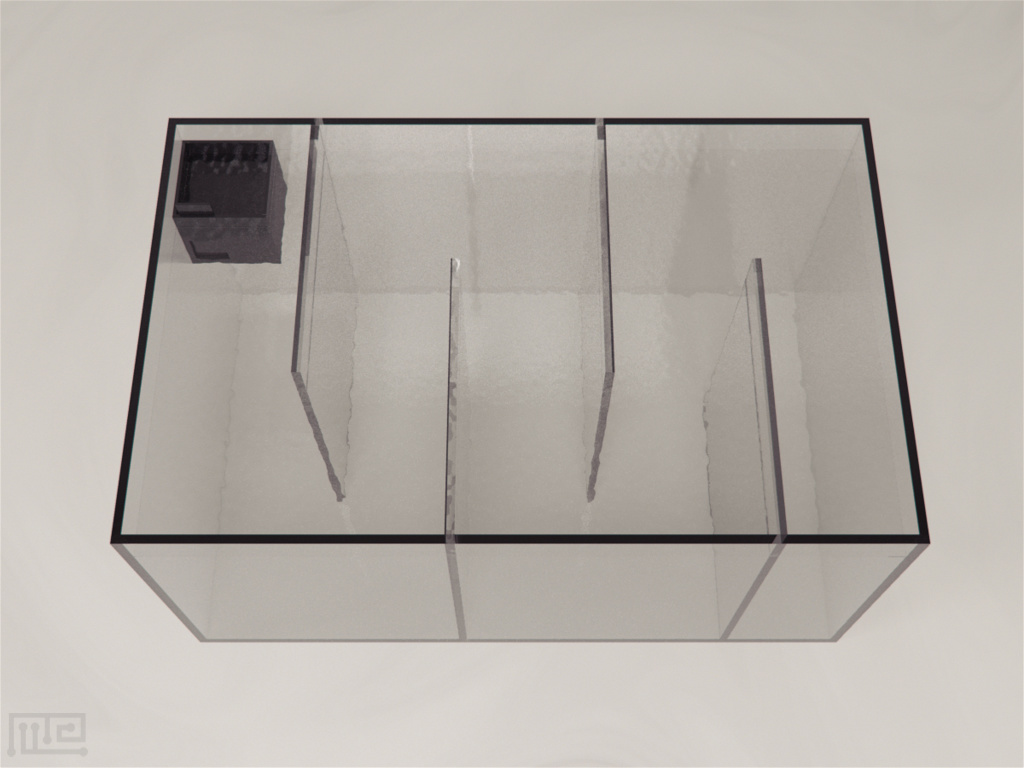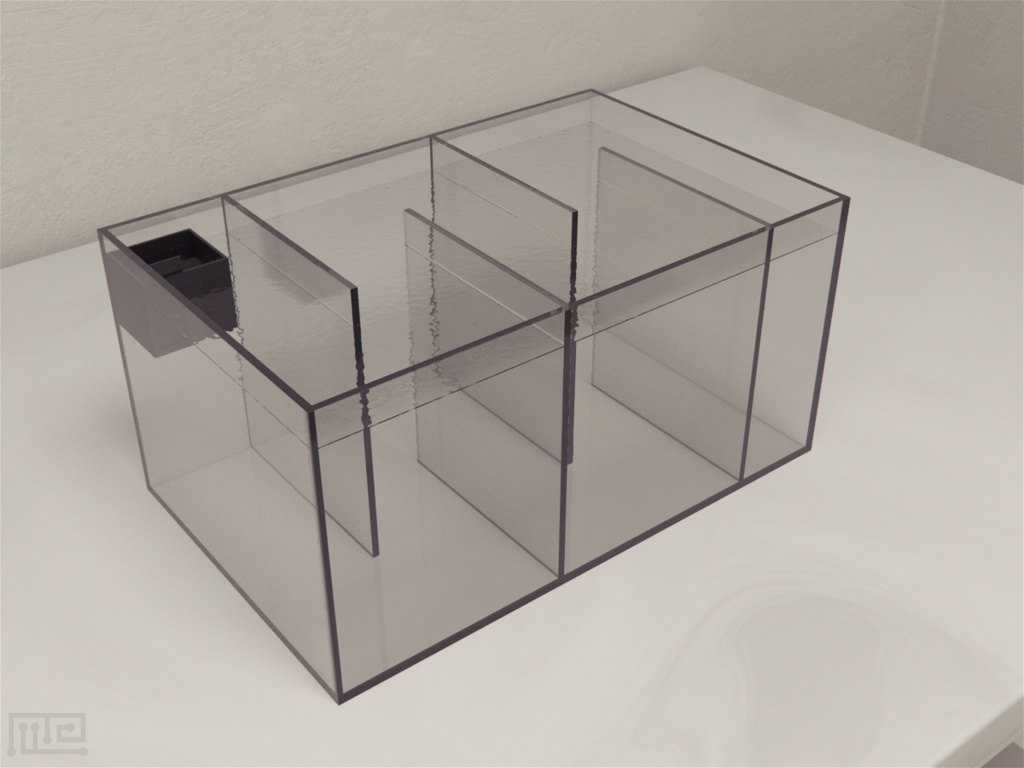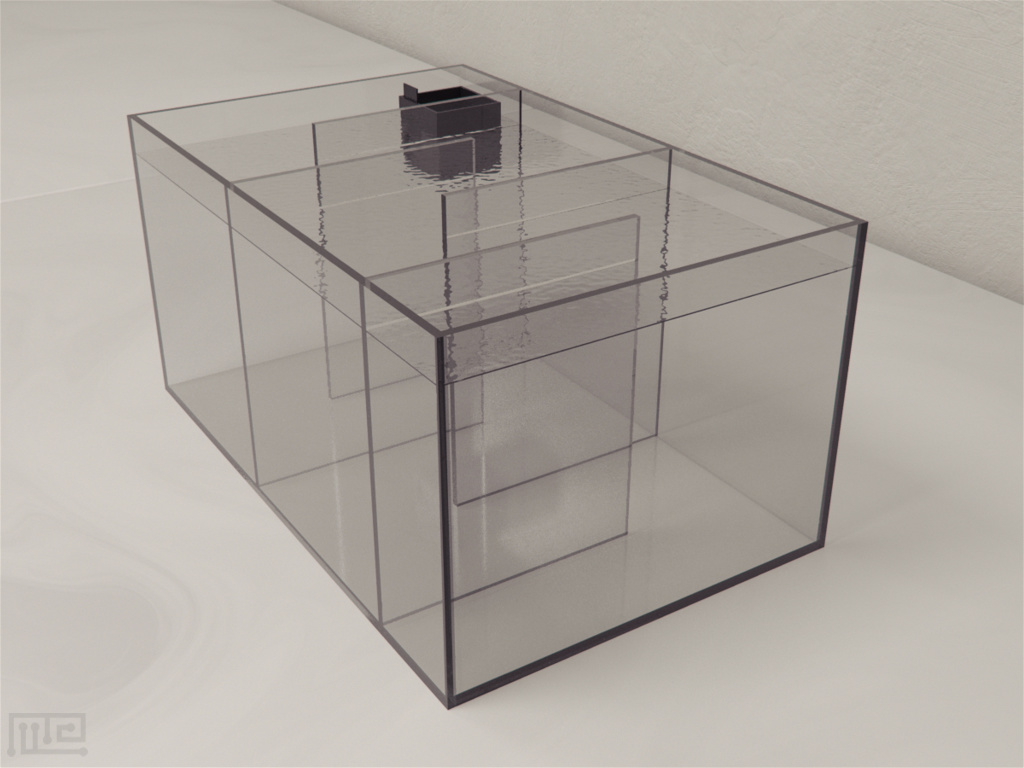Description
The zebrafish sociability chamber is used for studying the exploration and socialization behaviors in zebrafish. The concept of zebrafish sociability chamber derives from the 3 chamber sociability device used for socialization testing in rodents. The 5-chamber sociability tank analyzes the socialization behavior in fish by allowing them to interact with the social stimuli and explore the tank.
Price & Dimensions
Zebrafish
$ 1590
one maze- Tank size: 40cm x 25 cm x 20cm
- 5 chamber divisions, transparent
- Starting area: 5cm x 5cm black box with guillotine door
Documentation
Introduction
The exploration and shoaling behaviors in individuals differ depending upon their behavioral profiles or personality traits. The sociability chamber helps in studying the different response of similar species encountering a similar condition, depending upon their personality type. These conditions may be, response towards a specific drug, any challenging environment, drug addiction or development of a disorder.
The zebrafish sociability tank consists of five chambers. The first chamber contains the ‘starting box’ that receives the subject, and the fifth chamber holds the shoal tank containing the social stimuli. The exploration behavior is mainly observed in 1st,2nd and 3rd chamber whereas the socialization behavior of the subject is observed in 4th and 5th chamber. Other apparatus that use the zebrafish model include the Zebrafish Environmental Enrichment Chamber, the Zebrafish 5 Choice, and the Zebrafish Y-maze.
Apparatus and Equipment
Tanks of dimension 90 x 45 x 30 cm are used. Environmental enrichment can be done using objects such as fine grain gravel, upturned, black plastic pots (10 cm in diameter) to create areas of shelter, plastic plants (12–30 cm tall) and novel objects such as plastic plants of different colors, grey PVC-pipes (3 cm in diameter).
For assessing flexibility, two types of partitions are used: divider with exit hole (5 cm wide) in it and divider with tube access to the exit hole.
Sociability chamber is a rectangular, clear acrylic tank that is partitioned into 5 chambers using clear acrylic walls. The dimensions of the tank are 40 cm× 25 cm × 20 cm. The first chamber of the sociability tank contains a black box of 5 cm x 5 cm that is provided with a guillotine door for controlling the fish movement in and out of the box. A shoal tank for holding the social stimuli is placed in the fifth chamber of the sociability tank.
Training Protocol
Clean the apparatus thoroughly before starting the experiment. An external tracking and recording systems such as Noldus Ethovision XT can be used with the zebra sociability chamber for recording the fish activity.
Pretraining
Transfer the subject from the source tank to the black box in the first chamber of the sociability tank. Close the guillotine partition and let the fish stay in the first chamber for 60 seconds. After 60 seconds, lift the partition up to 2 cm and let the fish navigate through the chambers for 10 minutes. Repeat the process for each subject, individually.
Social Interaction Task
Place the social stimuli in the shoal box in the last chamber. Transfer the subject from its tank to the black box in the first chamber of the sociability tank. Let the subject acclimatize in the starting box for 60 seconds. After 60 seconds, lift the partition and allow the fish to swim through the chambers and interact with the social stimuli. Observe the behaviors of the subject’s behavior for 10 minutes.
Investigation of Zebrafish behavioral differences on alcohol exposure
Araujo-Silva, Pinheiro-da-Silva, Silva, and Luchiari (2018) investigated the individual differences and behavioral changes in zebrafish (Danio rerio) after alcohol exposure. The subjects were categorized widely as bold and shy. Six subject groups were formed including 3 groups of bold fish and 3 groups of shy fish. After 14 days of habituation, the subjects were exposed to 0.0%, 0.1% and 0.5% v/v% of alcohol for 60 minutes. The subjects were then transferred to the sociability chamber where zebrafish conspecifics were present as social stimuli. Results revealed that in control groups, shy fish socialized more than exploring the tank while bold fish explored more instead of shoaling. The bold fish group exposed to 0.5% alcohol showed an increase in socializing behavior. Both test groups of shy fish showed a significant decrease in shoaling behavior. Thus, it was concluded that the zebrafish response to the alcohol depends upon their behavioral profile where shy fish appeared to be more sensitive to alcohol exposure than the bold fish.
Data Analysis
Following parameters are observed when using sociability chamber
- Average swimming speed
- Maximum swimming speed
- Distance traveled
- Time spent immobile
- Time spent exploring the tank
- Time spent with the social stimuli
Strengths & Limitations
Strengths
The 5-chamber sociability tank helps in assessing the exploratory and sociability behavior of zebrafish simultaneously. The 5-chamber sociability tank can be modified easily according to the requirement of the research protocol. The sociability tank can be used to evaluate zebrafish behavior against other stimuli such as predator risk. It can also be used exclusively for exploration analysis when not provided with conspecifics. The apparatus is simple and produces reliable results.
Limitations
The sociability chamber does not consider the impact of anxiety, aggression or depression on the behavior of subjects. Unwanted stress and anxiety can result in inappropriate results and observations during the trial. Since zebrafish are comfortable in dark spaces, the light intensity is also a crucial factor during the task. The socialization behavior observed in the tank is highly dependent upon the social group used in the experiment.
Summary and Key Points
- The 5-chamber sociability tank is used to analyze the exploration and socialization behavior in zebrafish.
- The behavioral profiles of individuals govern their response towards specific stimuli such as drug exposure.
- The apparatus can be used to study fish response towards a novel environment, effects of drug treatment and effects of diseases/disorders on sociability and explorative behaviors.
- The selection of social stimuli used for assessing the socialization behavior in zebrafish is of utmost importance.
- The results obtained from zebrafish sociability chamber are reliable and provide ground for further research on human drug usages such as drug toxicity or drug overuse.
References
Araujo-Silva, H., Pinheiro-da-Silva, J., Silva, P. F., & Luchiari, A. C. (2018). Individual differences in response to alcohol exposure in zebrafish (Danio rerio). PLOS ONE, 13(6), 1-12. doi:10.1371/journal.pone.0198856



